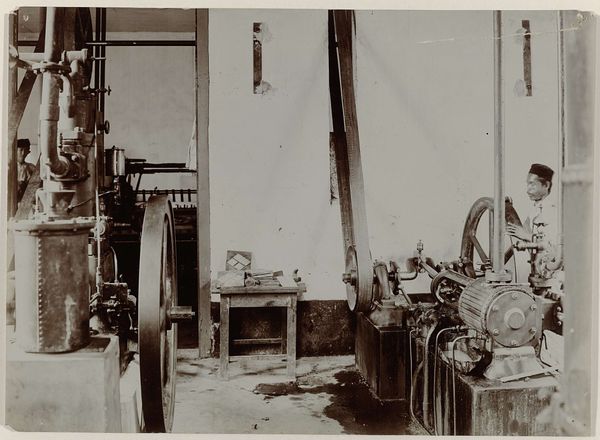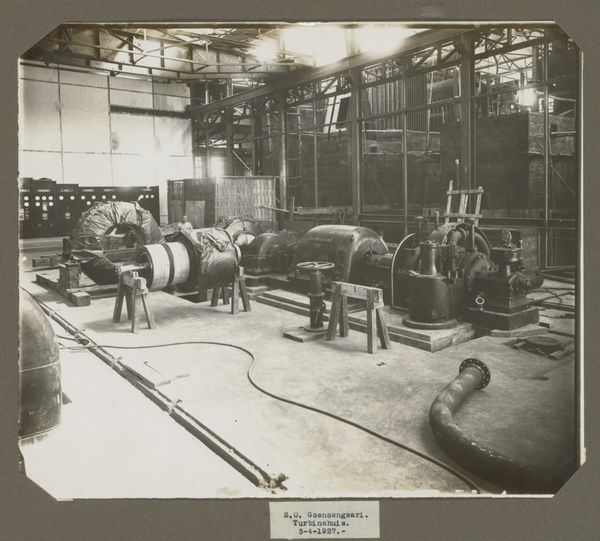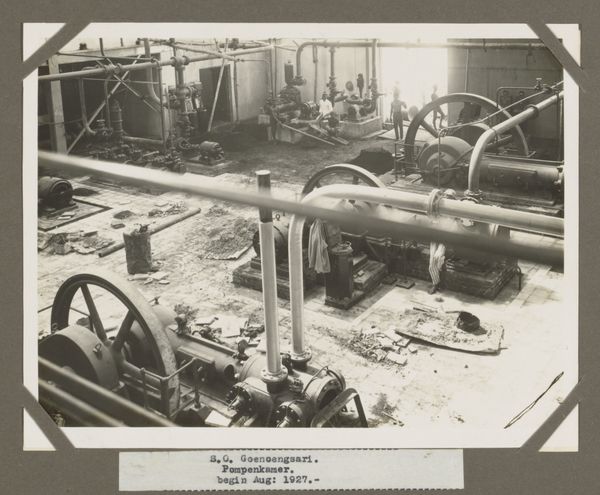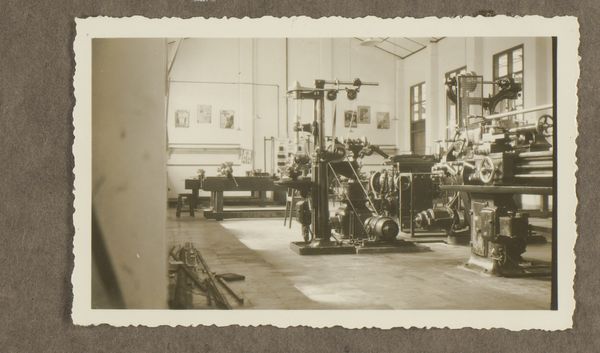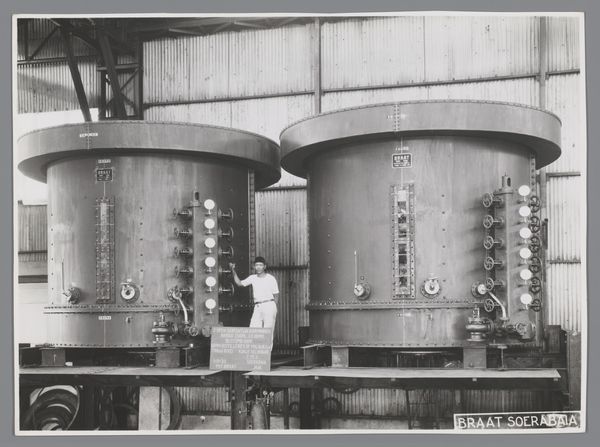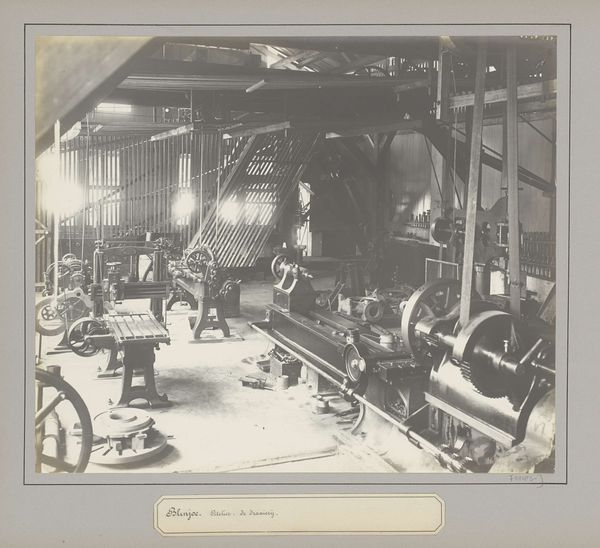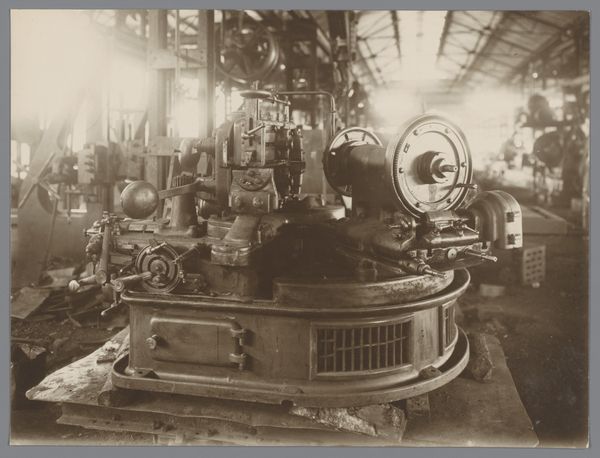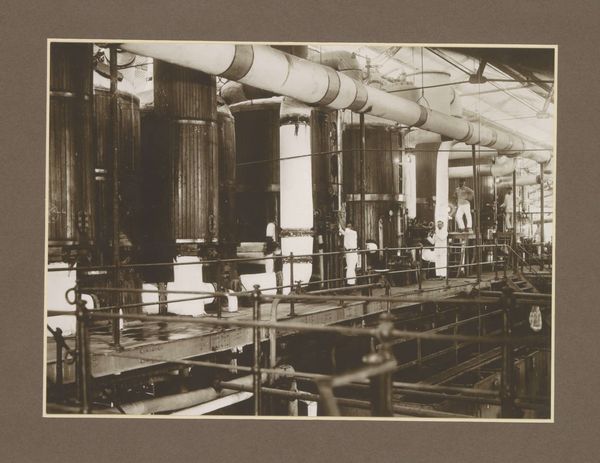
photography
#
photography
#
modernism
Dimensions: height 167 mm, width 231 mm
Copyright: Rijks Museum: Open Domain
Editor: Here we have an untitled photograph, known as "Machinekamer," taken sometime between 1931 and 1937. It appears to be an image of a mechanical room filled with dials, gauges and pipes, crafted through photography. I'm really struck by the starkness of it, the grays and whites lend an almost alien feel. What do you see in this piece? Curator: It's a fantastic example of Modernist photography’s focus on industrial subjects. What jumps out at me is the deliberate use of photography, a technology itself, to document this space of production. How do you think the photographer engages with the labor implied within this “Machinekamer?” Editor: That's an interesting point. I guess I hadn't really considered the human element – it’s so devoid of people, and focused entirely on these cold, hard, metallic elements. So, you’re suggesting it’s not just about the aesthetics of the machine, but about what these machines produce, and the process by which labor enables them? Curator: Precisely. Consider the act of photographing. It’s labor intensive: selecting equipment, preparing and developing images. Also, this isn’t a glamorous portrait of the factory owner but the tools *used*. It asks us to consider, not who *owns* the means, but how those means *operate.* What purpose might such documentation serve at that moment? Editor: It could be about control and surveillance. Understanding all of the different elements, or maybe something about promoting or advertising a Modern aesthetic… Curator: Certainly the act of observing implies power, it shapes the context and possibly impacts working-class viewers and factory owners during a rise in industry and machine operation popularity, but how are those contexts and themes conveyed through the very materiality of the photograph itself? Editor: It gives me a lot to consider. It's more than just a photograph of a room; it's a capture of a moment in industrial history, made possible by human hands. Curator: And by considering its materiality, and its engagement with industry we reveal complex interactions between technology, labor, and social change. I am left thinking of where the human is and the machine begins and its potential effects.
Comments
No comments
Be the first to comment and join the conversation on the ultimate creative platform.
